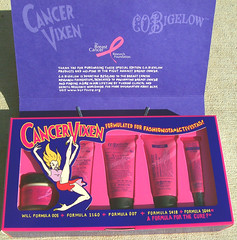
This is presented by friends of mine who really know their stuff and should be excellent. I'm planning on seeing it.
The Reward of Courage
Thursday, Nov. 10, 6 p.m. (doors open at 5:30 p.m.)
Keck Center, 500 Fifth St., N.W., Room 100
Join us for a screening of The Reward of Courage , the first public education film about cancer. Released 90 years ago this fall, the film introduced many ideas about cancer that are familiar today. A copy of this hitherto lost silent film was recently discovered, and in excellent
condition. A specially commissioned musical score, performed live by the
Snark Ensemble, will accompany the film.
More Information & RSVP
<http://click.newsletters.nas.edu/?ju=fe2e157376660074761676&ls=fdf017787767
0479741c797c&m=feef12737c620c&l=fe951573766c057973&s=fe1c10757562067a7c1d79&
jb=ffcf14&t=>
*********************
David Cantor PhD
Deputy Director
Office of History
National Institutes of Health
Bldg 45, Room 3AN38, MSC 6330
Bethesda, MD 20892-6330
U.S.A.
Phone: 301-402-8915 (Direct)
301-496-6610 (Office)
Fax: 301-402-1434
http://history.nih.gov/about/Cantor.html
